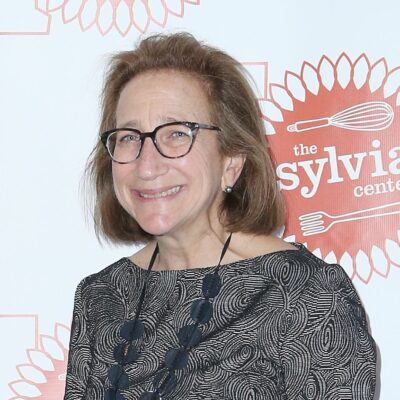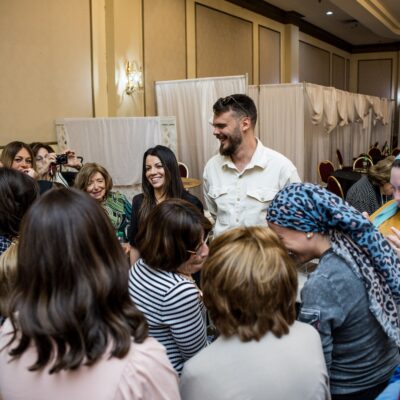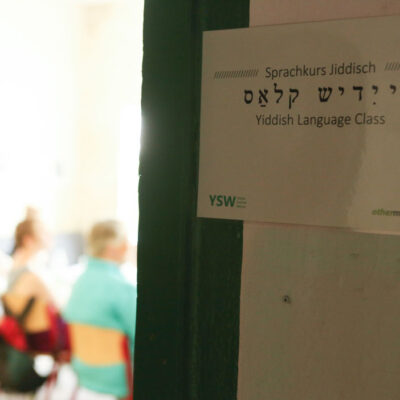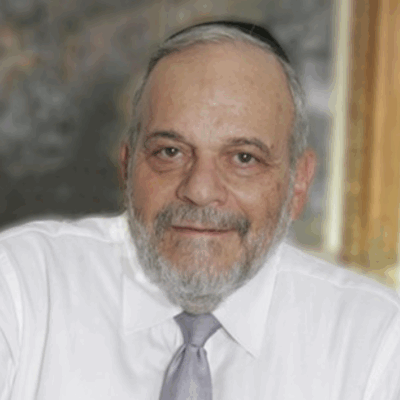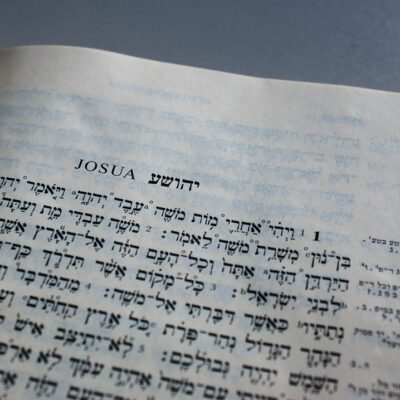Opinion
New approach
Hillel’s inquiry-centered model for Israel education
Over the past month, violence in and around Israel has dominated the conversation on many college campuses. As the associate director of Israel Education at Hillel International, I’ve been working with Jewish educators as they navigate this moment for both themselves and for their students. From these educators, I’ve heard two explicit asks: support in responding to antisemitism and anti-Zionism, and an educational framework that invites students with different worldviews to explore contemporary Israel together. While other Hillel teams are redoubling efforts to meet the first need, I have been working with campuses to cultivate the latter.
At Hillel, we have spent the last two years launching a pedagogy for Israel education that is multivocal and values-based. Termed the Inquiry-Centered Model, this new approach is designed to help emerging adult learners explore complexities in Israel. While the Inquiry-Centered Model was envisioned as an approach to Israel education more broadly, it has become particularly useful in navigating this political moment because it actively invites and contextualizes disagreement around students’ big questions. It is our hope that this model can be used by Israel educators, within and beyond our movement, who want to embody nuance in their teaching.

The four core elements of the Inquiry-Centered Model are (1) essential questions, (2) multiple narratives, (3) contextualized values systems, and (4) personal reflection.
Part I: Begin with an essential question that is open-ended and sparks a values clash.
Essential questions are the bread and butter of Jewish thought and of good education. Essential questions are perpetually arguable inquiries into universal ideas. For example, to invite students into this political moment, educators might ask: What responsibility, if any, does a diaspora people have to their homeland?
When educators design around essential questions, they open the door for learners across religious, political, and ideological spectra to find their place in a shared conversation. In a time where the Jewish community itself is more diverse than ever, orienting around essential questions leads to a more expansive approach, one that can embrace a multifaceted and dynamic generation of Jewish learners.
To successfully design essential questions, educators must be acutely aware of their institution’s boundaries around what is and is not open for debate. In her book The Political Classroom, Diana Hess calls this the distinction between “open issues” and “settled issues”. Educators must design their essential questions around open issues so that they can earnestly invite students to explore without prejudicing them to a certain set of answers. At Hillel, for example, the legitimacy of the State of Israel is a “settled” issue, whereas the policies of the government of that state are “open”. Beginning with a question on an “open” issue positions the educator to invite students on a journey of exploration.
Part II: Present multiple narratives that offer competing takes on the essential question.
To properly lean into essential questions, educators must identify and present positions, ideas, and perspectives that are different from each other. Before asking students to share their own opinions on a topic, we first ask them to listen to a diversity ideas. In Jewish tradition, this is known as asking students about the pshat, or simple meaning, of a source to establish shared understanding of the literal context before unpacking the deeper meaning.
Returning to our example of diaspora communities and homeland, an educator might choose to put in the conversation Golda Meir’s 1948 Speech to the Council of Jewish Federation Leaders along with the Pittsburgh Platform and Rav Kook’s perspective on the relationship between Am Yisrael and Eretz Yisrael. Between these sources, the educator would present three competing claims: the first that the security and future of the Jewish people depends on the security and future of Israel, the second that Jews should focus on building a fulfilling Jewish life outside Israel, and the third that the land of Israel is an intractable part of the Jewish soul. To connect to this particular political moment, educators might also include Leah Solomon’s perspective that Jewish and Palestinian liberation is interconnected, and thus diaspora Jews have a responsibility not only to Israelis but also to Palestinians.
Actively inviting difference into the room may raise anxiety for educators who are wary of charged conversations becoming destructive. In fact, the fear of explosive arguments is one of the highest barriers to entry for the educators, young professionals, and camp counselors with whom I work. However, if we begin with a pshat reading of multiple narratives, the disagreement in the room will begin between the source materials rather than between the students. When difference is a feature of the conversation, educators can guide students towards healthy disagreement rather than bracing against it.
The narratives educators choose to include present opportunities to think intentionally and expansively about our axes of inclusion. As conversations about authenticity and representation continue to take hold in the American discourse, teaching through multiple narratives supports educators translating these ideas to their presentation of the Israeli landscape. Not only does this mean thoughtfully integrating Palestinian voices, but also presenting perspectives across Israel’s religious, ethnic, and ideological spectra. The more possibilities we bring to our students about how those living in the land of Israel navigate life’s big questions, the better positioned students are to develop an authentic relationship to the Israel of today.
Part III: Contextualize each narrative according to its own values system.
Once students have engaged with the pshat of competing narratives, educators can guide them towards identifying what motivates various perspectives, what is at stake, and what values are in play. As students do this, they start to understand each perspective in the context of its own values system.
Contextualizing narratives in their own terms can be challenging when a narrative conflicts with the educator’s own beliefs. As educators, we have natural prejudices towards our own experiences, values, and ideas. But finding empathy for worldviews different from our own is critical. Returning to our example, an educator who believes deeply that Jews in the United States should focus on the American Jewish landscape would have to articulate Golda’s value of security as a compelling reason for diaspora Jews to remain committed to Israel. Likewise, an educator who believes strongly in Golda’s form of Zionism would have to present Leah Solomon’s perspective through the lens of universalism, intersectionality, and democratic equality.
When educators can present a perspective according to its own core values, they can more honestly invite students to reflect on which perspective(s) most resonate. Doing this reinforces the message that the nature of the educational journey is explorative and allows students to map themselves onto the conversation more authentically.
Part IV: Invite students to reflect on how they relate to the material and the essential question.
As educators in the Jewish communal world, our task is not only to explore content with our students in exciting and relevant ways. It is also to mentor and support them as they take on the brave task of constructing their own values systems. This means educators must ask students how they relate to the values at play and where they find resonance/dissonance with the ideas presented.
To conclude the homeland conversation, educators might ask, which of these perspectives most resonates with you? Which, if any, makes you uncomfortable? What personal experiences can you share that help us understand how you relate to the sources/ideas?
Integrating personal questions into teaching allows students to feel seen and heard. Moreover, when we provide a space for students to explore the disagreements they have about ideas and values, we impart on them the longstanding Jewish practice of makhloket, disagreement in service of deeper learning. This instills in students a belief that they are indeed a part of the conversation, rather than a consumer of it.
Guiding Questions for Educators
Educators curious if they have effectively met the four steps of this process can ask themselves the following questions:
Essential Question: Does my question inspire students with competing worldviews to engage in meaningful conversation with each other?
Multiple Narratives: Have I presented a perspective that I agree with and one that I disagree with?
Contextualize narratives according to their own values systems: Can I articulate, and empathize with, the values animating each narrative, even if I disagree with the narrative itself?
Personal Reflection: Have I built in discussion questions that invite students to share their personal beliefs and experiences?
Impact and Results
We’ve been implementing this model in our teaching for the last two years, in hopes that it would resonate with emerging adult learners. To test our hypothesis, we surveyed students on 30 campuses who participated in a six-week curriculum that follows the Inquiry-Centered Model. These campuses were diverse in size, demographics, and location.
Our initial data is inspiring. Of our sample, 88 percent of students feel confident discussing values animating the contemporary Israeli landscape and 65 percent have engaged a relative, friend, or classmate in multiple conversations about Israel since beginning the learning cohort. These numbers instill optimism in light of research from Dr. Ari Kelman that Jewish students are disengaging from both Jewish spaces and political discourse because of Israel. Rather than relegating themselves to the sidelines, as the students in Kelman’s study did, students of the Inquiry-Centered Model are actively engaging with Israel both inside and outside structured learning spaces.
It is our hope that this approach will not only help educators design programming that inspires students to develop more authentic relationships with Israel, but that it will also equip students to cultivate their own identities in a world already defined by competing values. The Inquiry-Centered Model is a shift from existing approaches; but if we are to continue engaging students with Jewish life and Israel, we need an educational approach that is resilient enough to hold the diversity of the Jewish community and empathic enough to boldly invite our students to show up as their full selves.
Lauren Cohen Fisher is the associate director of Israel Education for the Hillel International Center for Jewish and Israel Education.




